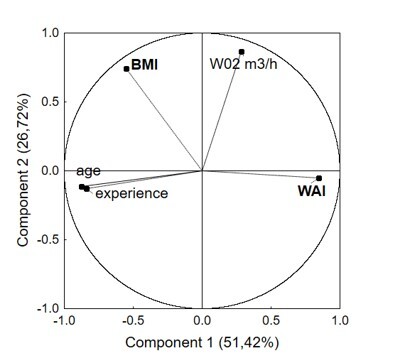Archive
Online first
Current issue
Instructions for Authors
Guide for authors
Peer Review Policy
Research Ethics Policy
Crossmark Policy
Ghostwriting and Guest Authorship
Copyright
Open Access Policy
Plagiarism
About the Journal
Aim and Scope
Scientific Board
Publisher
Editorial Board
Indexing in databases
Personal Data Protection
Repository policy
Contact
Efficiency and Ability of Employees to Work in Relation to Timber Quality
and Structural Ageing
1
Faculty of Forestry, University of Agriculture in Krakow, Poland
Submission date: 2023-04-04
Acceptance date: 2023-09-13
Online publication date: 2023-12-21
Drewno 2023;66(212)
KEYWORDS
REFERENCES (30)
1.
Adamowicz, K., Górna, A. [2020]: The application of trend estimation model in predicting the average selling price of timber. Drewno 63 [206]: 1-14. DOI: 10.12841/wood.1644-3985.350.07.
2.
Ackerman P., Gleasure E. L., Ackerman S., Shuttleworth B. [2014]: Standards for time studies for the South African Forest Industry. 1. ed. ICFR/FESA.
3.
Annex nr 1 to DGLP order nr 66. [2019]: Zasady Użytkowania Lasu (Forest Management Regulation), General Directorate of the State Forests.
4.
Bakker A. B., Demerouti E., Sanz-Vergel A. I. [2014]: Burnout and work engagement: The JD–R Approach. Annual Review of Organizational Psychology and Organizational Behavior 1 [1]: 389–411. DOI: 10.1146/annurev-orgpsych-031413-091235.
5.
Bascour-Sandoval C., Soto-Rodríguez F., Muñoz-Poblete C., Marzuca-Nassr G. N. [2020]: Psychometric properties of the Spanish version of the Work Ability Index in working individuals. Journal of Occupational Rehabilitation 30 [2]: 288–97. DOI: 10.1007/s10926-019-09871-0.
6.
van den Berg T., Elders L., de Zwart B., Burdorf A. [2008]: The effects of work-related and individual factors on the Work Ability Index: A Systematic Review. Occupational and Environmental Medicine 66 [4]: 211–20. DOI: 10.1136/oem.2008.039883.
7.
Brecher N. D. [2014]: The chameleon employee: it's true, people also blend into their environments--but is it the right environment? Journal of Property Management 79 [5]: 20-21.
8.
Dyjakon, A., Gebresenbet, G., Bosona, T., & Adamczyk, F. [2020]: Economic analysis of the collection and transportation of pruned branches from orchards for energy production. Drewno 63 [205]: 125-140. DOI: 10.12841/wood.1644-3985.284.01.
9.
El Fassi M., Bocquet V., Majery N., Lair, M. L., Couffignal S., Mairiaux P. [2013]: Work ability assessment in a worker population: comparison and determinants of Work Ability Index and Work Ability score. BMC public health 13[1]: 1-10.
10.
Eurostat [2022]: Wood products – production and trade. [accessed: 03.04.2023]. Available from: https://ec.europa.eu/eurostat/....
11.
Eurostat [2023]: Employment and activity by sex and age - annual data. [accessed 03.04.2023]. Available from: https://ec.europa.eu/eurostat/....
12.
Freudenberger H.J. [1974]: Staff burnout. J. Soc. Issues 30:159–65. DOI: 10.1111/j.1540-4560.1974.tb00706.x.
13.
Geissler H., Tempel, J., Geissler-Gruber B. [2005]: Can the Work Ability Index also be used by non-medical professionals? A comparative study. In International Congress Series Elsevier, volume 1280, June 2005: 281-285.
14.
Grzywiński W., Skonieczna J., Jelonek T., Tomczak A. [2020]: The influence of the privatization process on accident rates in the forestry sector in Poland. International Journal of Environmental Research and Public Health 17 [9]: 3055. DOI: 10.3390/ijerph17093055.
15.
GUS [2021a]. Rocznik Statystyczny Leśnictwa 2021. (Statistical Yearbook of Forestry 2021). Zakład Wydawnictw Statystycznych, Warszawa.
16.
GUS [2021b]. Rocznik Statystyczny Pracy 2021 (Statistical Yearbook of Work 2021). Zakład Wydawnictw Statystycznych, Warszawa.
17.
Hagen K. B., Magnus P. E. R., Vetlesen K. [1998]: Neck/shoulder and low-back disorders in the forestry industry: relationship to work tasks and perceived psychosocial job stress. Ergonomics 41 [10]: 1510-1518.
18.
Häggström C., Lindroos O. [2016]: Human, technology, organization and environment - a human factors perspective on performance in forest harvesting. International Journal of Forest Engineering 27 [2]: 67-78. DOI: 10.1080/14942119.2016.1170495.
19.
Jonsson, R., Rinaldi, F., Pilli, R., Fiorese, G., Hurmekoski, E., Cazzaniga, Robert N., Camia, A. [2021]: Boosting the EU forest-based bioeconomy: Market, climate, and employment impacts. Technological Forecasting and Social Change, 163, 120478: 1-15. DOI: 10.1016/j.techfore.2020.120478.
20.
Kuoppala J., Lamminpää A., Husman P. [2008]: Work health promotion, job well-being, and sickness absences - A systematic review and meta-analysis. Journal of Occupational & Environmental Medicine 50 [11]: 1216–27. DOI: 10.1097/JOM.0b013e31818dbf92.
21.
Kymäläinen H., Laitila J., Väätäinen K., Malinen J. [2021]: Workability and well-being at work among Cut-To-Length forest machine operators. Croatian Journal of Forest Engineering 42 [3]: 405–17. DOI: 10.5552/crojfe.2021.874.
22.
Landekić M., Martinić I., Bakarić M., Šporčić M. [2013]: Work ability index of forestry machine operators and some ergonomic aspects of their work. Croatian Journal of Forest Engineering 34 [2]: 241-254.
23.
Makowiec-Dąbrowska T., Koszada-Włodarczyk W., Bortkiewicz A., Gadzicka E., Siedlecka J., Jóźwiak Z., Pokorski J. [2008]: Zawodowe i pozazawodowe determinanty zdolności do pracy (Professional and non-professional determinants of employability). Medycyna Pracy 59 [1]: 9-249-24.
24.
Malińska M., Bugajska J., Bartuzi, P. [2019]: Zdolność do pracy (WAI) polskich pracowników biurowych (The ability to work (WAI) of Polish office workers). Hygeia Public Health 54 [4]: 251-257.
25.
Mansour M. [2016]: Quantifying the intangible costs related to non-ergonomic work conditions and work injuries based on the stress level among employees. Safety Science 82: 283–88. DOI: 10.1016/j.ssci.2015.09.007.
26.
Mihelic, M., Spinelli, R., & Poje, A. [2018]: Intensifying the management of protection forests in the Alps. Drewno 61 [201]: 23-38. DOI: 10.12841/wood.1644-3985.D03.07.
27.
Sertić, M. B., Barcic, A. P., & Klarić, K. [2018]. Economic determinants and analysis of the European Union wood industry SMEs employment. BioResources, 13 [1]: 522-534.
29.
Tuomi K., Ilmarinen J., Jahkola A., Katajarinne L., Tulkki A. [1998]: Work ability index. [19]. Finnish Institute of Occupational Health, Helsinki.
30.
WAI-NETZWERK. [2018]: Work Ability Index (WAI) - Questionnaire (short version) [accesed 20.03.2020]. Available from: http://www.mentalhealthpromoti....
We process personal data collected when visiting the website. The function of obtaining information about users and their behavior is carried out by voluntarily entered information in forms and saving cookies in end devices. Data, including cookies, are used to provide services, improve the user experience and to analyze the traffic in accordance with the Privacy policy. Data are also collected and processed by Google Analytics tool (more).
You can change cookies settings in your browser. Restricted use of cookies in the browser configuration may affect some functionalities of the website.
You can change cookies settings in your browser. Restricted use of cookies in the browser configuration may affect some functionalities of the website.



